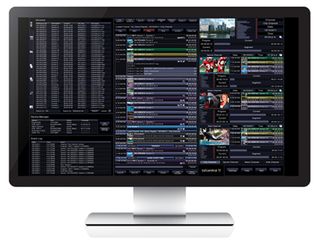Tech Transition Talk Set to Heat Up In Orlando

The TV tech world, which normally evolves at great speed, has seen even more urgency of late, specifically in the area of workflows and infrastructures. At B&C’s Technology Leadership Summit, to be held this week in Orlando, Fla., discussions among top execs will focus on the kinds of technologies the industry will need to deploy in the coming years.
One notable area is development of newer IP- and cloud-based tools. “We’re making significant investments this year to bring IP to all our products,” says Mike Cronk, Grass Valley senior VP of marketing.
Cronk and others stress it is still early days for some IP-based infrastructures. “But it really starts to unlock some very interesting new workflows,” says Straker Coniglio, director of market development, content creators and programmers, at Harmonic. “I think we’ll see a lot of work on proof of concepts in 2015, and in 2016 you will see a lot of new facilities making the full transition to IP.”
This will help enable a number of new workflows in the cloud that should make broadcasters more efficient and nimble. One example is cloud-based tech for handling and processing ads, says Bill Powers, senior VP, sales director, Broadcast Division, SG Systems.
“There is still a lot of labor and manual processes that go into handling and managing ads,” says Powers. He adds SG’s cloud-based systems for processing ads, “bring efficiencies and improvements to the sales, traffic and billing operation that can significantly streamline operations.”
Other high-profile topics on the ad tech side include better measurement, data analytics and programmatic ad platforms, adds Kelash Kumar, group product manager, Adobe Primetime.
Breaking Down the Walls
Broadcasting & Cable Newsletter
The smarter way to stay on top of broadcasting and cable industry. Sign up below
The growing reliability of cloud-based technologies and the decline in the cost of storage is also changing the way broadcasters are managing their assets, says Alex Grossman, VP of media and entertainment at Quantum. Grossman notes that Quantum’s new Q-Cloud offering “is a very flexible way of expanding the archive in a virtually unlimited manner.”
Systems to better automate processes in the cloud and inside broadcast facilities will also be on the minds of many in Orlando. “Customers are looking for ways to break down walls and do things more simply with the same amount of resources,” says Rick Young, VP and GM, sales and business development, Bitcentral.
In response to that imperative, Bitcentral recently acquired the automation provider Fission Software and incorporated its technologies into their Central Control offering. “We’ve always been 100% focused on software and workflows,” Young says. “The reason the acquisition makes so much sense is that customers want to look at their operation holistically. They want the same platform to handle everything they have, whether it’s news, advertising or syndicated programing.” Young adds that systems to simplify these workflows can increasingly be located in the cloud.
Toward that end, Cronk says one of Grass Valley’s big goals is to “virtualize our Stratus [workflow application framework and suite of production tools] so that any video professionals can get the job done regardless of where they are located.”
Software systems for managing large operations are increasingly important as station groups merge operations and consolidate into bigger companies. Jay Batista, general manager of U.S. operations at Tedial, notes Ericsson’s broadcast services business in Europe chose their cloud-based suite of media IT tools after conducting extensive tests with Tedial and other vendors. “They chose it as a flexible solution” that is specifically designed to handle the complexity of large operations, he says. “It doesn’t lock them into specific workflows and allows them to keep building their operations.”
Streamlined workflows for bringing in content from the field and distributing it to more stations and digital platforms will also get lots of discussion time. Mike Savello, VP sales at LiveU, explains that along with working to offer small cellular bonding units with greater features, LiveU is putting greater emphasis on systems to streamline workflows, better integrate these units into cameras and help users manage an increased number of feeds so they can share more content.
“I would say that 50% of our R&D is on back-end command and control,” for products such as LiveU Central to manage a client’s LiveU devices, he says.
